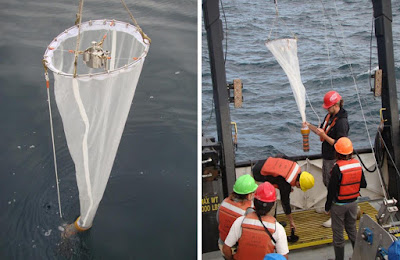
I felt like a kid on Christmas morning. It was a sunny day in April and the email I had just opened from Cindy Hagley at Minnesota Sea Grant’s Center for Great Lakes Literacy (CGLL) informed me that I had been accepted in the Shipboard Science Workshop on Lake Superior. From July 9th through July 15th I would be spending a week aboard the Environmental Protection Agency (EPA) research vessel, Lake Guardian, with fourteen other educators. Our mission: travel through the west arm of Lake Superior conducting research alongside university research biologists and EPA water quality monitoring specialists. It was a dream come true! The experience with my fellow shipmates (educators, scientists and crew) was unforgettable and invaluable. We collected and studied aquatic organisms living in the sediments and in the water and analyzed water quality to better understand the ecology of Lake Superior. The shipboard science experience allowed my fellow educators and me to gain insights that we will use to inspire our students with new curricula, relevant data and a science network that spans the Great Lakes.
Our experience also included several stops on land where local scientists met with us to share about the ecology of their region and the environmental challenges they face.
The first part of my shipboard story is told through photos …
The Lake Guardian
180 feet long and sleeps 42, The Lake Guardian was originally an oil rig tender in the Gulf of Mexico. It was purchased by the EPA in 1990 and converted into a research vessel. A worthy reincarnation!

Safety first! Our “frog suits”
Meant to keep a body alive in the frigid Lake Superior waters for at least an hour. Glad this was the only time we wore them (that’s me in the front row with the one-hand wave).
Leaving Duluth
Following an orientation in the Great Lakes
Aquarium and our safety training onboard, we’re off! The lift
bridge goes up for us; that’s me on the right with my new friend,
Quan, a teacher from Wisconsin.
Our first collection site just off of Silver Bay, Minnesota: The
rosette.
Data is collected using three tools; first is the rosette which
collects water samples at various depths. It also collects water quality data. The rosette is always first in a sampling stop, as it is important to not
disturb the water column before collecting water samples.
In search of the thermocline:
Marine Technician, Max, in the
rosette control room. Red is temperature, blue is dissolved oxygen, green is
fluorescence, and yellow is beam attenuation.
How much does light scatter when
sent through a column of water? The higher the beam attenuation, the more
particles there are in the water column.
EPA scientist Glenn Warren explains how to use the water quality monitoring equipment.
Samples collected from the rosette will be tested for conductance, pH, alkalinity, turbidity, chlorophyll A and nitrate.

The zooplankton net
The zooplankton net was our second collection tool.

Research biologist Christy Meredith pours the zooplankton from the collection tube into a Nalgene bottle.
Everyone on the back deck must
wear life vests, steel-toed boots and hard hats at all times.
Look at all of those miniature
crustaceans!
The PONAR ... It's purpose?
To grab the top layer of sediment in order to capture the Diporeia that live there. Diporeia are a critical part of Lake Superior’s ecosystem.
Agitating the sediment to collect the Diporeia
Those guys
like to burrow! Talk about getting your hands dirty…

Pouring the water and the critters away from the muck.
The net that collects the Diporeia allows water to flow through it. Each PONAR sample collected is rinsed, agitated and
poured six times. That’s a lot of playing in the dirt!
Research biologist Joel Hoffman
Joel Hoffman is an international Diporeia guru in the biology lab.
I am filled with gratitude for my experience aboard the Lake Guardian. The learning curve was steep, the sleep was minimal, the motion of the boat stayed with me for days afterward, and I loved every bit of it.
Stay tuned for Part 2 of Aboard the Lake Guardian: A Watershed Educator’s Experience. It will focus on the experience of being aboard the ship (living quarters, food, crew, pilot house and amenities
Thanks for reading!



















